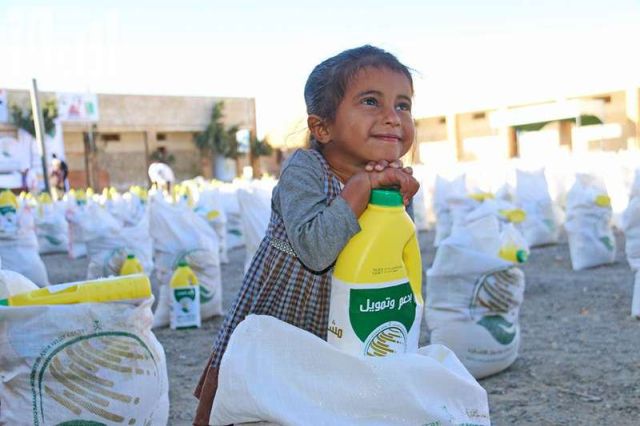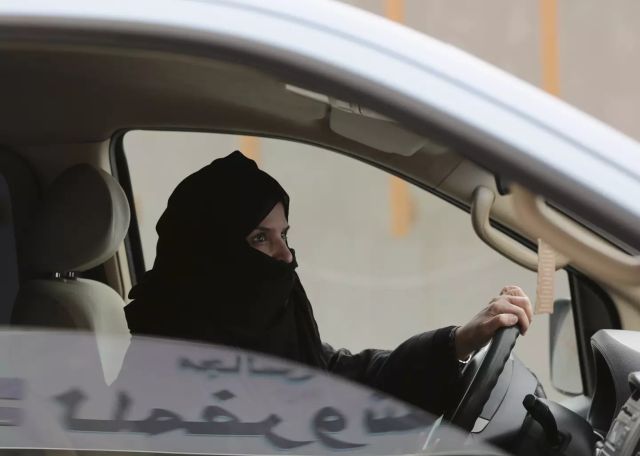
by admin | May 25, 2021 | Muslim World
 Riyadh : After failing to qualify for the World Cups in South Africa in 2010 and Brazil in 2014, Saudi Arabia will have the chance to compete at the 2018 FIFA World Cup in Russia this year. But it remains to be seen if the country can register their first victory since 1994.
Riyadh : After failing to qualify for the World Cups in South Africa in 2010 and Brazil in 2014, Saudi Arabia will have the chance to compete at the 2018 FIFA World Cup in Russia this year. But it remains to be seen if the country can register their first victory since 1994.
Saudi Arabia qualified for the World Cup for four consecutive editions between 1994 and 2006, but the ‘Green Falcons’ have never fared better than on their competition debut, reports Xinhua news agency.
More critically, Saudi Arabia have not won a single game at the World Cup after beating Belgium in 1994.
Now the 2018 FIFA World Cup in Russia is another fighting chance for Saudi Arabia to prove that they can win in the tournament.
Saudi Arabia’s road to Russia was not smooth. In the Asian section of 2018 FIFA World Cup qualification, Saudi Arabia collected 19 points with a 6-1-3 record. They finished second in the group following a 1-0 win against Japan in the very last round and secured a place in the World Cup, which was thanks to the goal difference ahead of Australia who have the same number of points.
In the World Cup finals, Saudi Arabia have been drawn in Group A with Russia, Egypt and Uruguay. Although there are no traditional strong teams and it seems to be a favourable group, Saudi Arabia have the lowest FIFA ranking among the four teams.
Saudi Arabia have yet to release their final list of 23 players. However, there is no doubt that they will be one of the oldest teams in Russia, as most of the players are above 27 years of age.
Most of the players in this Saudi Arabian squad play their weekly football match in the domestic league, so they are familiar with each other.
Although they lack world famous superstars, Saudi Arabia have a prolific striker like Mohammad Al-Sahlawi who can score in a variety of ways. The 31-year-old striker scored 16 goals in the qualifying stages and was reportedly sent to train with English club Manchester United ahead of the World Cup.
Moreover, the Middle East kingdom also sent nine players to several Spanish clubs since this January, hoping training and playing games with world-class players can improve their technical level.
Other Saudi Arabian players who the world can look forward to are Yahya Al-Shehri and Fahad Al-Muwallad. Yahya Al-Shehri plays as a left winger. The 27-year-old scored five goals during qualification and now is an indispensable player in the national team.
Fahad Al-Muwallad is one of the most promising players in Asia. In the qualification game against Japan, the then 23-year-old player scored the winning goal and sent Saudi Arabia to the 2018 World Cup in Russia.
The performance of these three players may be crucial to the Saudi Arabian national team.
As for the manager, the Saudi Arabian Football Federation (SAFF) changed the national team coach twice last year.
Bert van Marwijk, the Dutch coach who was hired by the SAFF in 2015, took Saudi Arabia to their first World Cup in over a decade. However, this achievement did not keep him the job. The former Netherlands coach who led the Dutch all the way to the 2010 World Cup final was replaced by Argentinian Edgardo Bauza last September.
However, Bauza left his post after just five games in charge, including back-to-back losses against Bulgaria and Portugal.
Now, Argentine Juan Antonio Pizzi will take the team to Russia. The former Chile manager was appointed to lead Saudi Arabia last November.
Saudi Arabia only managed a 3-1-2 record in six recent friendly matches, including a heavy 1-4 defeat to Iraq and a 0-4 thrashing by Belgium.
So, with the World Cup looming, there is a lot of preparation needed to be done by Pizzi and his players.
We are now less than 20 days away from Saudi Arabia’s debut in Russia. In the first match, they have to face the host nation to the cheers of thousands of home fans.
Then, the ‘Green Falcons’ will fight against the very strong Uruguay, led by Luis Suarez and Edinson Cavani. In the final round of the group stage, Egypt with Mohammed Salah will be tough opponents.
—IANS

by admin | May 25, 2021 | Muslim World
 Jeddah : According to UN data, the Kingdom of Saudi Arabia is one of the world’s leading supporters of global humanitarian aid and development. The Kingdom’s support of Palestine is one example of the firm stand it has taken to provide impartial humanitarian assistance to crisis-affected people in countries around the world.
Jeddah : According to UN data, the Kingdom of Saudi Arabia is one of the world’s leading supporters of global humanitarian aid and development. The Kingdom’s support of Palestine is one example of the firm stand it has taken to provide impartial humanitarian assistance to crisis-affected people in countries around the world.
For decades, the people of Palestine have received ongoing and extensive support from the Kingdom. Between 2000 and 2018, the Kingdom has provided Palestine with aid and development support the equivalent of $6,051,227,493.
Among the Kingdom’s partners in delivering its assistance in Palestine have been various UN agencies, the Saudi National Committee for the Relief of the Palestinian People, and national and international NGOs.
For the past three years, most of the Kingdom’s international humanitarian aid programs and initiatives in Palestine and elsewhere have been carried out by the King Salman Humanitarian Aid and Relief Center (KSrelief).
In a recent press statement to the Saudi Press Agency (SPA), Dr. Abdullah Al Rabeeah, Advisor to the Royal Court and Supervisor General of KSrelief, stated that the Kingdom has provided aid to the Palestinian people in three major assistance categories: development ($4,531,487,015), humanitarian ($1,002,298,330), and philanthropic ($17,330,878).
An additional $200,000,000 was also pledged by the Kingdom – $50 million of this amount to the United Nations Relief and Works Agency for Palestine Refugees in the Near East (UNRWA), and $150 million to support the Palestinian Waqf Program in Jerusalem.
Dr. Al Rabeeah further pointed out that the most crucial development assistance provided by the Kingdom was for the $263.17 million program to construct and renovate housing units in Palestinian refugee camps in the West Bank, Gaza Strip, including Ain Al Hilweh camp and Nahr Al-Bared camp.
The Kingdom funded a $107 million housing project in Rafah (Phase I), implemented through UNRWA, for the construction of an integrated residential city, including 752 housing units for 4,564 people, four schools, a health center, a cultural center, a mall, a mosque, paved roads, streetlights and water supply facilities. Phase II of the same Rafah project included 765 housing units for 4,761 people, two schools, a mosque, and electricity and water supply infrastructure. Two additional projects to provide water and electricity networks and roads were also undertaken at the Ain Al Hilweh and Nahr Al-Bared camps for a total cost of $258.4 million.
According to Dr. Al Rabeeah, the Kingdom has also undertaken the following additional programs, projects, and initiatives in Palestine between 2011 and 2018:
• A project to furnish and equip more than 17 medical centers and support some Palestinian hospitals with medical equipment and medications, and another to provide an ambulance and medicines for use by at the Al-Aqsa Mosque clinic (total cost: $58 million.)
• A project to develop, expand and equip more than 61 primary and intermediate schools in different parts of Palestine (total value: $125.46 million).
• Eight food security projects implemented through the World Food Program (WFP) (total value: $17.9 million).
• A project to support Palestinian families (including widows, orphans, and the wounded) was implemented with the Islamic Development Bank (total cost: $250 million).
• Support for the Jerusalem Fund ($285 million.)
• With UNRWA, constructing shelters and rehabilitating infrastructure ($30 million).
• Support for the Palestinian government ($43.9 million).
• Joint project with the Palestine Red Crescent Society to provide medical and nutritional services ($53.3 million).
• Funding of philanthropic aid to Palestine ($17.3 million); projects included the payment of the full cost for 3,177 Palestinian religious pilgrims to visit Saudi Arabia ($15,330) and a project to provide Palestinians with fresh meat ($2 million).
The Kingdom also provided $300,111,270 through the Saudi National Committee for the Relief of the Palestinian People. $100,534,320 of this amount covered the costs for 79 projects in the Gaza Strip, West Bank, and Palestinian refugee camps. These projects included:
• Distributing food baskets and loaves of bread
• Canning and distributing fresh meat
• Providing flour, milk, and child-related necessities
• Distributing clothing, blankets, and bedding
• Providing fuel to Gaza Strip camps
The Kingdom has provided ($52,970,191) to help specific groups of Palestinians in need, including:
• Families who have lost their primary breadwinners
• Families whose homes or farms have been destroyed
• Families whose relatives are detainees in Israeli prisons
• Families whose members have been wounded, are disabled, or have special needs
• Families who are poor
• Orphans
• Programs to provide employment for Palestinian workers
The Kingdom has also provided $58,946,536 for healthcare and medical sector aid, including:
• Assisting patients
• Providing treatment for Palestinians in Saudi Arabia’s hospitals
• Supporting the Palestine Red Crescent with 132 fully-equipped ambulances
• Providing measles and mumps vaccinations
• Providing medicines, medical supplies, and dialysis equipment for hospitals belonging to the Palestinian Ministry of Health in the Gaza Strip and the West Bank
In the education sector, the Kingdom provided $40,252,592 for projects in the Gaza Strip and the West Bank for the following programs:
• Support for 11 Palestinian universities
• Payment of student fees
• Scholarships for 159 students to obtain higher-education degrees (Bachelor’s, Master’s and Ph.D.) in Arab-region, European and American universities
• Establishment of 12 libraries at Palestinian universities
• Distribution of school kits for teachers and students
• Construction of a computer center for community development
• Vocational training center for women in Hebron
• Establishing and equipping eight women’s centers
Construction projects for the West Bank and Gaza Strip were funded by the Kingdom in the amount of $41,745,844, and included the following:
• Construction of an oncology center in the Gaza Strip
• Renovation of 2,345 housing units in the West Bank and Gaza Strip
• Construction of 500 integrated housing units with infrastructure in the Gaza Strip
• Construction of 100 new housing units in the West Bank city of Hebron
The budget for infrastructure projects was $5,662,103, and included the rehabilitation of the water system and electrical grid system in Nablus, and the construction of desalination plants in the Gaza Strip.
All of these projects, Dr. Al Rabeeah clarified, were provided either directly by the Kingdom, or in collaboration with KSrelief’s partners, including such international organizations and UN agencies as UNRWA, WFP, UNICEF, UNFPA, and UNESCO.
The Supervisor General paid tribute to the Kingdom’s leaders for their keen interest in providing comprehensive assistance to the people of Palestine and reemphasized the Kingdom’s commitment to supporting the universal humanitarian principles of compassion and cooperation between nations and peoples with the goal of alleviating the suffering of all in need.
—AG/UNA-OIC

by admin | May 25, 2021 | Muslim World
 Jeddah : More than 19 million pilgrims have performed Umrah in 2017, according to a report by Saudi Arabia’s General Statistics Authority, Al Ekhbariya news website reported.
Jeddah : More than 19 million pilgrims have performed Umrah in 2017, according to a report by Saudi Arabia’s General Statistics Authority, Al Ekhbariya news website reported.
The statistics released as part of the Kingdom’s Vision 2030 contain numbers of pilgrims who performed Umrah from within Saudi Arabia and abroad last year, as well as other figures based on records by the Hajj and Umrah ministry.
Through this report, the Kingdom aims to establish a database on the pilgrims visiting the Kingdom to perform Umrah in a bid to help decision makers implement regulations that serve pilgrims and aid their Umrah process.
Statistics have shown that 19,079,306 pilgrims have performed Umrah in 2017. Among these were 6,532,074 pilgrims who came from abroad, according to the Ministry of Hajj and Umrah records.
While those who performed Umrah from Saudis and non-Saudis within the Kingdom were 12,547,232, based on the authority’s survey.
The percentage of Saudi pilgrims was 46.9, and non-Saudi pilgrims from inside the kingdom was 53.1. The domestic Umrah pilgrims consist of 46.3% males and 37.7% females.
Results also have shown that the month of Ramadan is the most popular time of the year pilgrims choose to perform Umrah.
The pilgrims who performed Umrah during Ramadan last year was 53.6% of the total pilgrims.
The King Abdulaziz International Airport in Jeddah recorded the highest percentage of pilgrims’ arrival from overseas, around 62.5%. While Umrah pilgrims who arrived in Prince Mohamad bin Abdel Aziz Airport in Madinah was 25.7%.
—AG/UNA-OIC

by admin | May 25, 2021 | Muslim World
 Jakarta : The Saudi Arabian authorities have allowed Indonesia`s customs to check Hajj pilgrims` identity by using biometrics in home country`s embarkation, according to Indonesian Minister of Religious Affairs Lukman Hakim Saifuddin.
Jakarta : The Saudi Arabian authorities have allowed Indonesia`s customs to check Hajj pilgrims` identity by using biometrics in home country`s embarkation, according to Indonesian Minister of Religious Affairs Lukman Hakim Saifuddin.
Saifuddin believes that the arrangement will cut queues during security check-in Saudi Arabia. “All this time, our Hajj pilgrims should wait for hours to queue, both in Jeddah or Madinah airport, now it can be checked in our Hajj embarkation,” he said here on Saturday.
The Minister was thankful for Indonesian government`s effort in convincing Saudi`s customs to permit such policy to improve security system`s efficiency.
By using biometrics in the Hajj dormitory, the Indonesian customs will verify each pilgrim`s fingerprints and iris scans, as well as travel documents. Hence, they just need to queue for passport stamp upon arrival in Saudi Arabia.
Besides cutting queues, Saifuddin said such system will allow Indonesian Hajj pilgrims to have more time to rest after a long hour flight.
In near future, the biometrics system will be fully regulated in 18 Hajj embarkation points in Indonesia.
—AG/UNA-OIC

by admin | May 25, 2021 | Muslim World
 Riyadh : The Saudi Interior Ministry has confirmed its readiness to allow women to drive vehicles in the kingdom, starting from June 24 after decades of a ban.
Riyadh : The Saudi Interior Ministry has confirmed its readiness to allow women to drive vehicles in the kingdom, starting from June 24 after decades of a ban.
Assistant Minister of Interior for Operation Affairs General Saeed Al-Qahtani confirmed that all women capable of driving cars can do so, according to an Al Arabiya report on Monday.
He also said female drivers would be on par with males in facing penalties and fines in case of traffic violations.
“Those who will drive cars are our daughters, wives and sisters, and it’s our duty to remind them of rules and prevent any harm against them,” he said, adding that the decision to allow women to drive serves the country.
He highlighted that security checkpoints would be set up to deal with expected changes in traffic after the ban would be lifted, Xinhua news agency reported.
Saudi King Salman bin Abdulaziz Al Saud ordered in September 2017 to allow women to drive cars after decades of restricting driving only to male citizens and residents.
The order was one of the major steps Saudi Arabia has taken to change the society in general and promote the foundations for a strong economy in particular.
—IANS

 Riyadh : After failing to qualify for the World Cups in South Africa in 2010 and Brazil in 2014, Saudi Arabia will have the chance to compete at the 2018 FIFA World Cup in Russia this year. But it remains to be seen if the country can register their first victory since 1994.
Riyadh : After failing to qualify for the World Cups in South Africa in 2010 and Brazil in 2014, Saudi Arabia will have the chance to compete at the 2018 FIFA World Cup in Russia this year. But it remains to be seen if the country can register their first victory since 1994.



